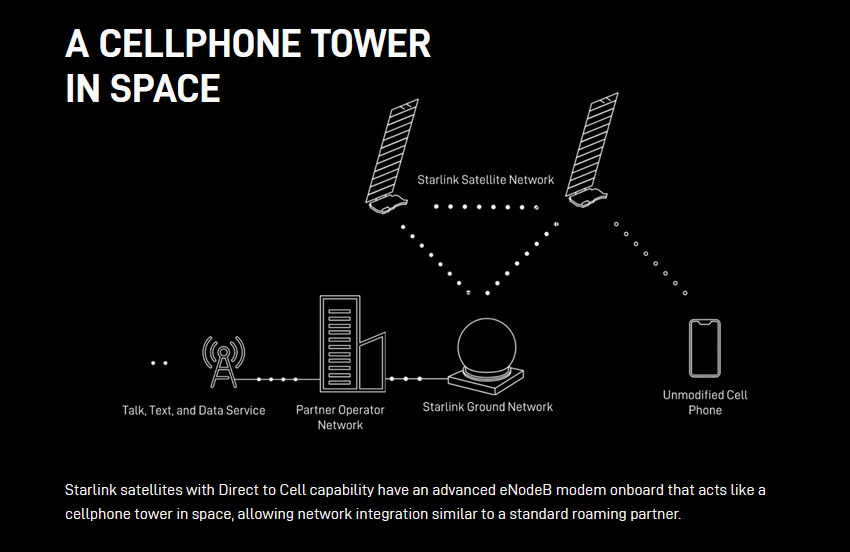In a groundbreaking move, SpaceX’s Starlink is set to revolutionize the telecommunications landscape with its upcoming “Starlink Direct to Cell” service. The recent update on the Starlink website offers a glimpse into the future of satellite-delivered cell phone connectivity. This visionary project promises to deliver “ubiquitous coverage” through a network of “cellphone towers in space,” utilizing standard LTE technology. The timeline presented outlines the introduction of text service in 2024, followed by voice and data in 2025, with IoT (Internet of Things) service slated for the same year.
Satellite phone connectivity has traditionally relied on bulky, specialized hardware, such as the devices used in the legacy Iridium network. Even with the advent of technologies like Apple’s connectivity paradigm, which allows for emergency texting within designated windows, the user experience has been far from seamless. Starlink aims to disrupt this status quo by bringing comprehensive space-based connectivity to everyday smartphone hardware.

The Starlink Direct to Cell initiative distinguishes itself through a series of groundbreaking improvements over existing systems. Firstly, it operates in a lower orbit compared to other satellite networks. For instance, the iPhone’s Globalstar network orbits at approximately 1,400 km above Earth, while the Iridium network is positioned at around 781 km. In contrast, Starlink’s constellation operates in a lower orbit, approximately 550 km above Earth’s surface. This proximity to Earth offers significant advantages in terms of signal strength and reduced latency.
Another pivotal development is SpaceX’s ongoing work on Starship, which is poised to become the world’s largest rocket. This leap in rocketry technology translates to the ability to launch larger satellites into orbit. These larger satellites, in turn, can support more substantial and sensitive antennas than those typically deployed in space. The result is a more efficient and robust connection that significantly enhances the feasibility of cellular space service.
Once the Starlink satellite network is fully operational, SpaceX assures users that the service will seamlessly integrate with existing LTE smartphones. No hardware modifications, firmware updates, or specialized applications will be required. This means that users will enjoy effortless access to text, voice, and data services wherever they have a clear view of the sky. While the latest website update does not specify the expected service speed, the initial announcement in 2022 projected speeds in the range of 2–4Mbps.

According to the website, Starlink’s Direct to Cell capability will first be deployed on SpaceX’s Falcon 9 rocket, with eventual plans to transition to the larger Starship rocket. The shift to Starship is particularly significant as it enables the launch of full-size “V2” satellites, which cannot be accommodated by the smaller Falcon 9. The current reliance on “V2 Mini” variants, due to Starship’s developmental delays, underscores the importance of the larger rocket’s successful deployment.
While the timeline presented on the website outlines service upgrades for Direct to Cell in 2025 and 2026, it’s essential to approach these projections with cautious optimism, considering SpaceX’s track record of ambitious but occasionally delayed projects. The initial plan aimed for a “beta service” launch this year, a goal that now appears uncertain.
Once the Starlink Direct to Cell network is operational, SpaceX has already secured partnerships with several prominent cellular service providers. The list of partners includes T-Mobile in the US, Rodgers in Canada, KDDI in Japan, Optus in Australia, One NZ in New Zealand, and Salt in Switzerland. Additionally, the promotional page is actively seeking additional cellular partners to expand its global footprint.
In conclusion, SpaceX’s ambitious Starlink Direct to Cell initiative is poised to usher in a new era of satellite-enabled cell phone connectivity. With a commitment to seamless integration, lower orbits, and the promise of Starship’s capabilities, the project has the potential to redefine how we stay connected in the digital age. While the timeline may be subject to adjustments, the future of cellular space service looks promising, offering users unprecedented access to communication services from virtually anywhere on the planet.





